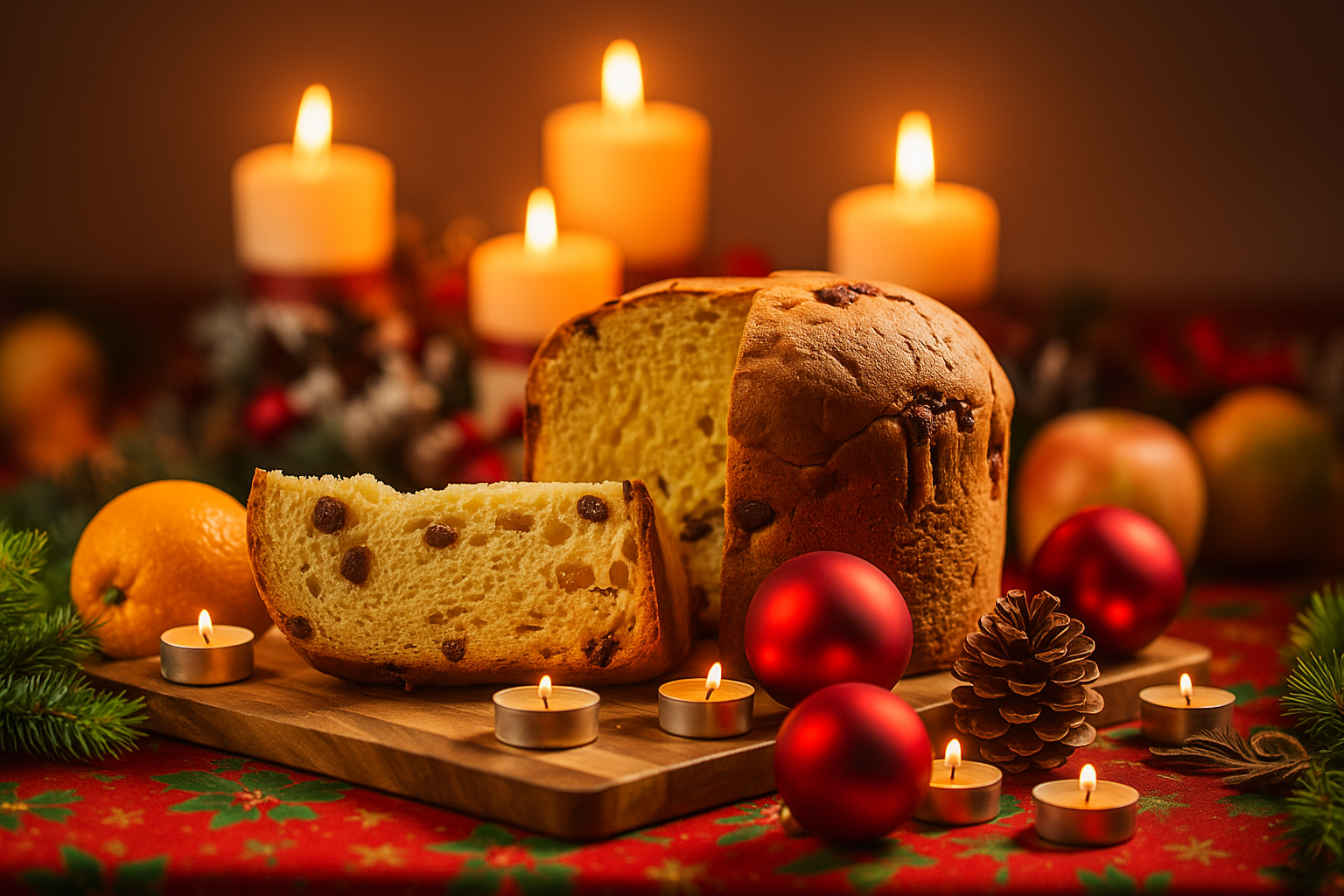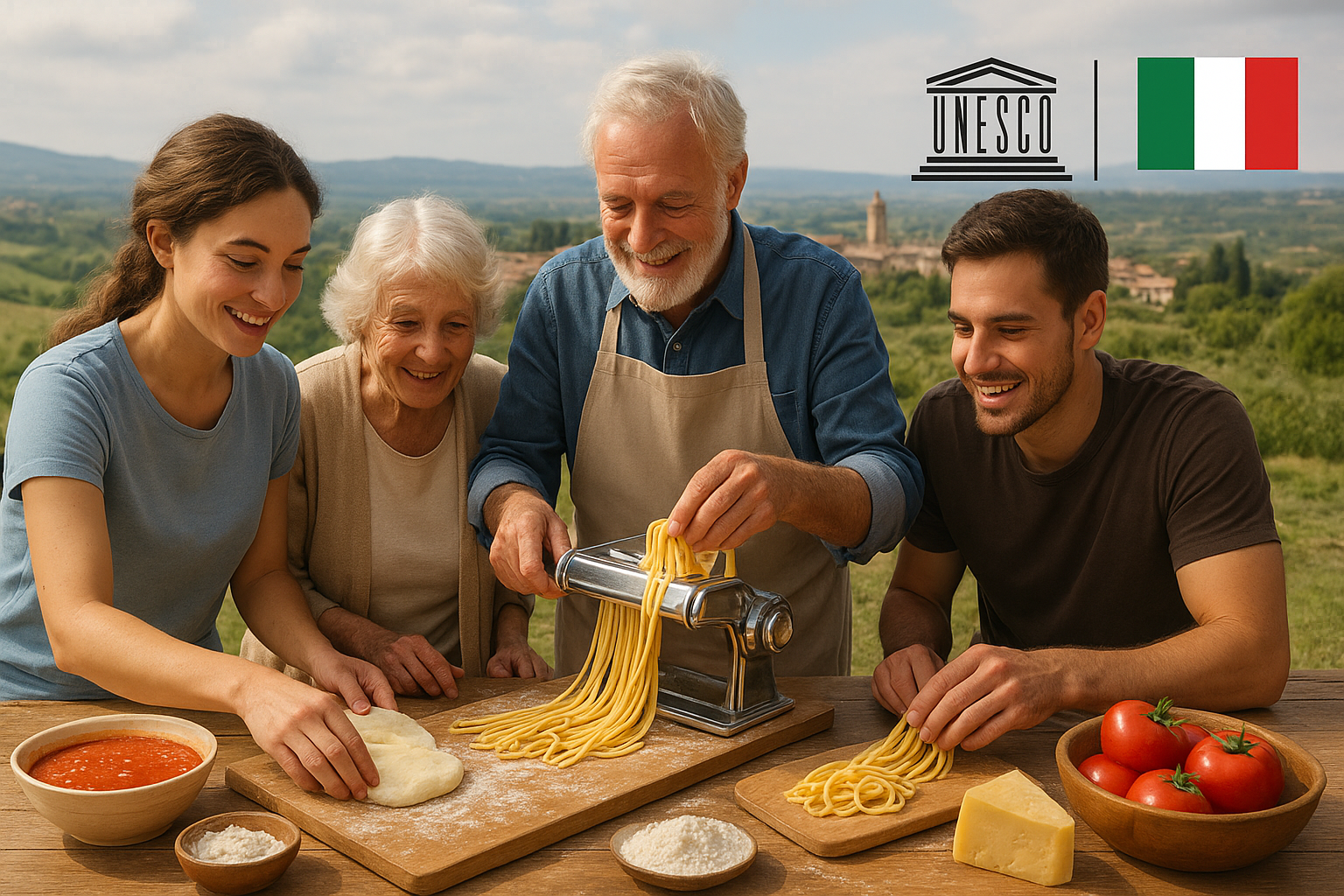The word “biscotti” is derived from the Latin term bis-coctus, meaning “twice cooked.” True to their name, these Italian cookies are traditionally baked twice, giving them their distinct crispness and long shelf life. Known for their versatility, biscotti come in a wide range of flavors, textures, and regional varieties. Whether you prefer crunchy, hard, soft, or crumbly, there’s a biscotto (or cookie) for everyone to enjoy.
A Closer Look at Popular Biscotti Varieties
Italy’s cookie culture is as diverse as its regions, with recipes often tied to local ingredients and traditions. Here’s a breakdown of some of the most beloved types of biscotti:
1. Cantucci or Cantuccini
- Texture: Hard and crunchy
- Pairing: Best known for being paired with vin santo, a sweet Tuscan dessert wine. Traditionally, cantucci are dipped into the wine to soften their hard texture and enhance the flavors.
- Other Uses: While vin santo is the classic accompaniment, cantucci are equally delightful when dipped into milk, coffee, tea, or hot chocolate, making them a versatile treat for any time of day.
- Ingredients: These cookies are typically made with flour, sugar, eggs, and almonds. The dough is shaped into logs, baked once, then sliced and baked again to achieve their signature crunch.
2. Amaretti
- Texture: Flourless and either crispy or soft, depending on the recipe
- Flavor Profile: A delicate almond flavor with a slight bitterness from the inclusion of apricot kernels or bitter almonds.
- Ingredients: Made from egg whites, sugar, and finely ground almonds, amaretti closely resemble the French macaroon. Their simplicity allows the flavor of the almonds to shine.
- Regional Notes: Originating in Lombardy, amaretti have gained popularity nationwide and even internationally, with different regions putting their unique spin on the recipe.
3. Soft and Crumbly Cookies
Beyond cantucci and amaretti, Italy is home to an array of soft and crumbly cookies that melt in your mouth. Examples include:
- Occhi di Bue (Bull’s Eyes): Jam-filled cookies with a shortbread-like texture.
- Ricciarelli: A softer version of amaretti, these cookies hail from Siena and are typically dusted with powdered sugar.
- Baci di Dama (Lady’s Kisses): Two buttery almond or hazelnut cookies sandwiched together with chocolate filling.
The Cultural Importance of Biscotti in Italy
Biscotti are more than just a dessert—they are woven into the fabric of Italian life and culture. In Italy, cookies are enjoyed at various times of the day, whether as a quick breakfast with a cappuccino, an afternoon pick-me-up, or a dessert after dinner.
Homemade Traditions
While Italy boasts many iconic cookie brands, such as Mulino Bianco, many Italians still prepare biscotti at home, especially for special occasions. Homemade biscotti are often shared during holidays like Christmas and Easter or given as thoughtful gifts. The recipes are frequently passed down through generations, preserving the family’s culinary heritage.
Regional Variations
Every Italian region has its own signature cookies that reflect local ingredients and traditions. For instance:
- Tuscany is famous for cantucci and ricciarelli.
- Piedmont specializes in hazelnut-based cookies like baci di dama.
- Sicily boasts fig-stuffed buccellati and almond-based paste di mandorla.
This regional diversity adds to the charm and richness of Italy’s biscotti culture.
Modern Biscotti Brands: Mulino Bianco and Beyond
While many Italians still make biscotti from scratch, store-bought varieties are also immensely popular. Among them, Mulino Bianco stands out as the most well-known brand, both in Italy and abroad.
Mulino Bianco: A Household Name
- History: Founded in the 1970s as part of the Barilla Group, Mulino Bianco specializes in baked goods, including cookies, biscuits, and pastries.
- Varieties: From buttery shortbread to chocolate-dipped cookies, Mulino Bianco offers a wide range of options that appeal to all tastes. Their Abbracci (ring-shaped cookies) and Pan di Stelle (star-shaped chocolate cookies) are particularly beloved.
- Global Reach: Thanks to Mulino Bianco, Italian biscotti are now enjoyed worldwide, giving people a taste of Italy’s culinary excellence.
Other noteworthy brands that produce Italian cookies include Balocco, Gentilini, and Loacker, each with its unique offerings.
Why Italians Love Their Cookies
Italians have a deep appreciation for the art of baking, and biscotti are a testament to this passion. Here’s why biscotti hold such a special place in Italian hearts:
- Simple Ingredients, Bold Flavors: Most biscotti recipes rely on simple, high-quality ingredients like almonds, flour, and sugar. This simplicity allows the flavors to shine.
- Versatility: Biscotti can be enjoyed on their own, paired with beverages, or used as a base for desserts like tiramisu.
- Social Rituals: Sharing biscotti over coffee or dessert wine is a cherished tradition in Italy, fostering a sense of community and connection.
Making Biscotti at Home: A Timeless Tradition
One of the best ways to experience the joy of biscotti is to make them yourself. While recipes may vary, the process is generally straightforward, and the results are rewarding. Here are a few tips:
- Choose Fresh Ingredients: Use high-quality almonds, fresh eggs, and pure vanilla extract for the best flavor.
- Experiment with Add-ins: While almonds are traditional, you can add chocolate chips, dried fruit, or spices like cinnamon for a unique twist.
- Double Baking for Perfection: For authentic biscotti, don’t skip the second bake—it’s what gives them their signature crunch.
Conclusion: A Sweet Celebration of Biscotti
From the crisp bite of cantucci dipped in vin santo to the soft, chewy goodness of amaretti, biscotti are a delicious expression of Italy’s rich culinary heritage. Whether homemade or store-bought, these cookies bring a taste of Italian tradition to every bite.
So, whether you’re enjoying a box of Mulino Bianco cookies with your morning coffee or crafting your own batch of biscotti at home, take a moment to savor the artistry and history behind these delightful treats. After all, few things are as comforting and timeless as a perfect Italian cookie.
![Mulino Bianco:Assorted Biscuits * Total 61.72 Ounce (1750g) * Pack of 5 [ Italian Import ]](https://m.media-amazon.com/images/I/51NbC6MAkrL._SS520_.jpg)

![Mulino Bianco: "Tarallucci" Biscuits made with fresh eggs 12.3 Oz (350g) - Pack of 4 [ Italian Import ]](https://m.media-amazon.com/images/I/51sJEkgNcuL._SS520_.jpg)


![Mulino Bianco: "Macine" Shortbread cookies Cream - 12.3 Oz (350g) Pack of 3 [ Italian Import ] …](https://m.media-amazon.com/images/I/518asj4fevL._SS520_.jpg)
![Mulino Bianco: "Gran Cereale Classico" Cereals Cookies (Classic Taste), High in Fibers Biscuits 17.63 Ounces (500g) Packages (Pack of 3) [ Italian Import ]](https://m.media-amazon.com/images/I/51MBKgK+nGL._SS520_.jpg)
![Mulino Bianco: "Pan di Stelle" biscuit with cocoa , hazelnuts and many magical starlets of icing - 12.34 Oz (350g) Pack of 4 [ Italian Import ]](https://m.media-amazon.com/images/I/51m5fyqLl+L._SS520_.jpg)

![Mulino Bianco: "Gran Cereale Classico" ("Cereals Cookies", Classic Taste), High in Fibers Biscuits 17.63 Ounces (500g) Package (Pack of 4) [ Italian Import ]](https://m.media-amazon.com/images/I/51icn1LDS3L._SS520_.jpg)
![Mulino Bianco: "Galletti" shortbread with sugar granules - 12.3 Oz (350g) Pack of 4[ Italian Import ]](https://m.media-amazon.com/images/I/51EB3KDWBbL._SS520_.jpg)

![Mulino Bianco: "Campagnole" Shortbread cookies with cream of rice milk and rice flour - 24.69 Oz (700g) [ Italian Import ]](https://m.media-amazon.com/images/I/51NOth7sMML._SS520_.jpg)



![Mulino Bianco: "i Batticuori" shortbread with chocolate - 12.34 Oz (350g) Pack of 4 [ Italian Import ]](https://m.media-amazon.com/images/I/41kwae8hHjL._SS520_.jpg)
![Mulino Bianco: "Girotondi" shortbread with grains of sugar cane - 12.3 Oz (350g) Pack of 4 [ Italian Import ]](https://m.media-amazon.com/images/I/516kpbEcDvL._SS520_.jpg)
![Mulino Bianco: "Chicche" Shortcake filled with cocoa cream - 7.05 Oz (200g) Pack of 2 [ Italian Import ]](https://m.media-amazon.com/images/I/51AT1V-cZiL._SS520_.jpg)
![Mulino Bianco: "Cornetti alla Albicocca" 6 croissants with Apricot jam 10.58 Ounces (300g) - Pack of 2 [ Italian Import ]](https://m.media-amazon.com/images/I/51M-ExEstML._SS520_.jpg)
![Mulino Bianco: "Molinetti" Shortbread cookies with flour buckwheat and brown sugar - 28.21 Oz (800g) [ Italian Import ]](https://m.media-amazon.com/images/I/51apqxCTQ8L._SS520_.jpg)

![Mulino Bianco: "Ritornelli" shortbread with cocoa and almonds - 24.69 Oz (700g) Pack of 2 [ Italian Import ]](https://m.media-amazon.com/images/I/51P91qeT+fL._SS520_.jpg)


























Italian Dating & Chat for Italian Singles

Virtually meet thousands of like-minded Italian singles and connect at lightning speed; on desktop, tablet, and your beloved phone. Chat into the wee hours of the night if you’d like. Post photos, share your interests and dreams-we’ll help you look your best while you do it.Here we make it easy to meet Italian singles and feel things out first so when you do go on that first date, or meet for espresso, you can relax and be yourself. Try it now!





